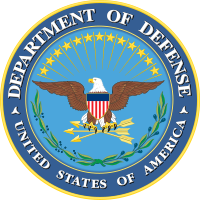School Training
The Standard Response Protocol (SRP) is a synthesis of common practices in use at a number of districts, departments and agencies. Standard Response Protocol is not a replacement for any school safety plan or program. It is simply a classroom response enhancement for critical incidents, designed to provide consistent, clear, shared language and actions among all students, staff and first responders.
As a standard, SRP is being adopted by emergency managers, law enforcement, school and district administrators and emergency medical services across the country. Hundreds of agencies have evaluated the SRP and recommended the SRP to thousands of schools across the US and Canada.
In order to further explain the use of the Standard Response Protocols within DoDEA schools, the following training aids have been authorized by DoDEA.
The DoDEA SRP online training modules are provided by the Security Management Division at DoDEA Headquarters for all school-level administrators and staff in DoDEA schools. The goal of these modules is for ALL DoDEA staff to understand why it is essential that ALL DoDEA schools be able to execute each of the protocols effectively when responding to an emergency or during an emergency incident to better serve our students, staff, and first responders.
SRP Course - Basic
This course should take approximately 30 minutes to complete.
SRP Course- Advanced
This course should take approximately 75 minutes to complete.
SRP Case Studies
Standard Response Protocol for 6th to 12th Grade Students
Standard Response Protocol for Pre-K to 3rd Grade Students
Educators having 4th and 5th grade students may choose either video to accomplish the required Standard Response Protocol training.
It is important that all public safety officials, school administrators, communication officers, and members of the media understand and use a common terminology. For parents, understanding the terminology may ease fears and concerns during an incident.
Used when there is a need to remain in a classroom or area, even during class transitioning. Can be used for such events as a medical emergency, unruly students in the hallway, or whenever an incident requires all students and staff to remain in their current positions.
- Students will clear the hallways and remain in a room or area until the “All Clear” is announced.
- Teachers will close and lock the doors to rooms or areas (if possible).
- Teachers will account for students and adults.
- Classroom activities will continue uninterrupted.
Directed when there is a threat or hazard outside the school. Whether it is due to violence or criminal activity or a dangerous animal on the playground, a lockout uses the security of the physical facility as a protective measure.
- No students allowed outside of buildings and/or portable classrooms (no P.E., recess, etc.).
- All building exterior doors are closed and locked.
- Where possible, classroom activities will continue uninterrupted.
Directed when there is a threat or hazard inside the school building. From serious altercations to intruders to active shooter situations, lockdown uses classroom security to protect students and staff from the threat.
- All students stay in place with a teacher or staff member.
- Students and teachers remain in locked classrooms, locating “safe zones” within each classroom.
- No one enters or exits the school, except law enforcement or incident response personnel.
Implemented when there is a need to move students from one facility to another.
- Officials conducting or supervising evacuation will vary based on the school and incident taking place.
- Students will proceed to designated evacuation area. If separated from their class, students should join any evacuation line and identify themselves to the teacher in their group after arriving at the evacuation site.
Shelter is called when the need for personal protection is necessary. This may include events such as a tornado, earthquake or hazardous material spill.
- Shelter strategies may include evacuate to a shelter area, seal the room or drop and cover.
- Schools will identify potential shelter situations and designate specific responses, as appropriate.
If school or installation officials require that a school building be evacuated, students and staff members will be safely transported to a designated parent-student reunification location. Parents will be informed of the reunification location based upon local operating procedures. At the reunification location, students will be released to their parents upon presentation of proper identification.
DoDEA does not release this type of specific information in advance due to force protection and student safety consideration. Also, during emergency situations, circumstances could arise that might force changes to previously designated locations.
What to do during a lockdown drill at your school
Standard Response Protocol sign that says, "DRILL IN PROGRESS NO ONE IN OR OUT".
Standard Response Protocol guidance for Schools, Districts, Departments and Agencies
Standard Response Protocol poster with steps to take in an emergency.
What to do in an emergency
Standard Response Protocol document with "MEDICAL HELP", green "OK" and red "HELP" cards.
Standard Response Protocol document with "Roll Sheet" and green "OK" and red "HELP" cards.
Standard Response Protocol poster that says, "SCHOOL IS SECURED NO ONE IN OR OUT."
Standard Response Protocol handbook for students and parents
The Standard Response Protocol for Pre-K to 2nd grade
The Standard Response Protocol Pocket Guide K - 12 2021
Standard Reunification Method
The Standard Response Protocol Quick Reference (QR Code)




